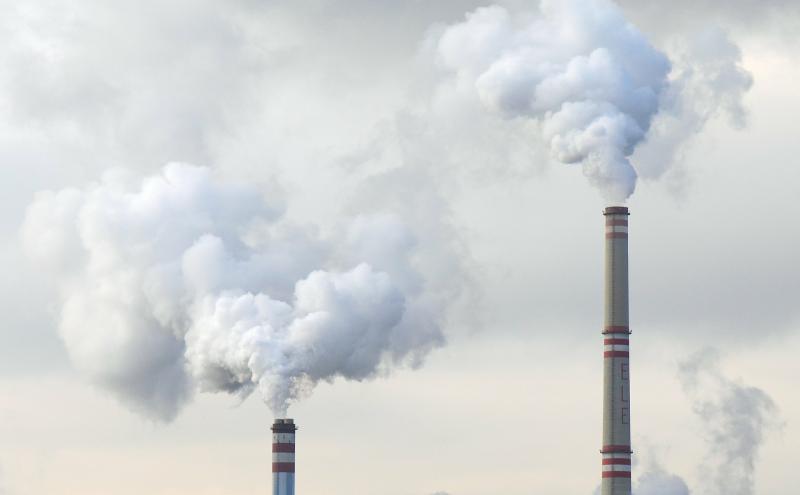The global temperature rise is of greater concern this time. But how? How does the temperature increase? Here we'll take a look at the conservation of energy and what energy sources can cause the rise in temperature.
Heat energy is the form of energy which is often the result of work or work done by other forms of energy. Heat is the energy that's transferred. We never define heat as the energy stored because heat has the flowing property. But some physicists prefer to call stored heat for some specific situations. We here define heat as the energy in transit for now. Later we look at the stored heat in our Earth's system.
What's temperature then? Heat and temperature are not the same things. This article assumes that you know the difference and if you don't you can read about heat and temperature before continuing this article.
The sun radiates energy in the form of electromagnetic waves which can travel through space without any requirement of medium. The Earth absorbs about 71% of the solar energy and 29% is reflected back to space. The atmosphere absorbs about 23% which includes atmospheric gases, water vapor, dust particles and ozone, and 48% by the land (surface).
The increase in energy increases the temperature which is the result of increased vibration (KE) of the molecules of the material; the molecules are more excited with the increase in energy and hence more temperature. The energy the Earth absorbs must be radiated back to the space to maintain a constant average temperature.
The Earth indeed radiates energy back to space, and the heat transfer takes place by the radiation (one form of heat transfer). The heat current is proportional to the 4th power of temperature, from the expression of heat current. That is, if the temperature is T, the heat transfer is T to the power 4 times greater.
It's a good thing that the Earth maintains it's own temperature. The most heat is transferred back to the space by the atmosphere which is about 59%, and surface radiates about 12%. This equals total of 71% heat initially absorbed by the Earth. So, the absorbed heat is transferred to the space by radiation.
We have a term called "albedo" which determines the amount of radiation reflected by the materials. The bright materials reflect more radiation and they have greater albedo. The sea and land absorb more radiation and it has less albedo. The air pollution can decrease the snow's albedo because the dark particles that land on the snow help absorb more radiation speeding up the melting process.
The greenhouse gases such as CO2 help maintain the constant temperature in the Earth that they absorb some infrared radiation and keep the Earth warm. They work like the blanket surrounding the Earth in the Troposphere. It's a good thing that they don't allow all heat to be transferred to the space and help maintain the warmth required to live for the species on Earth.
The problem is that our use of burning fossil fuel and other activities that involve the production of greenhouse gases is increasing the content of these gases in the atmosphere. The more the greenhouse gases, the more heat is absorbed and the blanket that surrounds us becomes more thicker and absorbs more heat and hence increases the temperature of the Earth.
The major source of energy of the world is fossil-fuel where about 66% of the energy of the world depends on this fuel and 71% of energy in the US is generated from fossil-fuel. It may be relatively inexpensive to build power plants that utilize fossil fuel as the energy source but they contribute to the production of greenhouse gases and hence help increase the Earth's temperature.
Anything that uses heat engine also contributes to the increase in temperature. The power plants that use fossil-fuel to generate electricity use steam engine. The heat wasted in any heat engine (could not be converted to work) must be absorbed by the atmosphere and cause thermal pollution. The large cooling towers send heat to the environment which the environment must absorb and therefore contribute thermal pollution.

The thermal pollution by heat engines is not avoidable, as the second law of thermodynamics suggests that no heat engine is capable of converting all absorbed heat to mechanical work, however the engineers are trying to make the best engine possible. We can mitigate the greenhouse gas production by limiting the burning of fossil fuels.

Even the windmills and solar cells contribute global warming. The windmills disturb the natural cooling process and the black solar cells absorb more solar radiation.
The overall stored heat of the Earth must be constant so that the life on Earth is possible. By the term "stored heat" we mean the total amount of heat at an instant. The stored heat must be constant, that is the incoming heat must be equal to the outgoing heat and the net heat is constant. We emphasize the fact that heat is never stored, so never think heat as something that can be stored. Heat has the flowing property and it flows by the different mechanisms of heat transfer.
